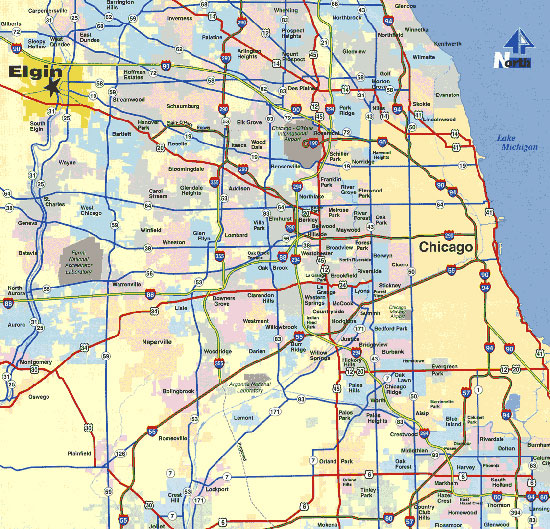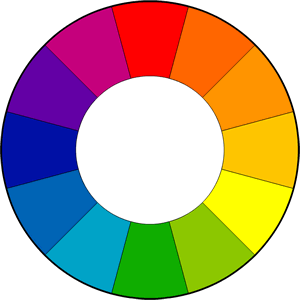5 Web Design Elements Not To Overlook
Web design is tricky business. Often small things that go unnoticed turn out to be significant in impacting the overall performance of the website and further influencing crucial factors like website traffic, revenue generation and conversion figures.
 Here are some factors that are often overlooked but are by no means unimportant and should be taken very seriously.
Mystery Meat Navigation
This is the type of navigation where icons or pictorial buttons are used to represented navigational links. Unlike regular navigation links, they are devoid of text that defines its location. Therefore users are left to wonder the location by themselves. This handicaps the browsing experience because users are often unable to locate the designated look.
Mystery meat navigation require JavaScript and images in order to function. This also bloats the size of web pages and increases their load time. This further hampers the accessibility quotient of the website. Even if you decide to use images for link, make sure you complement them requisite text links as well in order to make the navigation menu accessible and usable. Smooth and flawless browsing experience ensures rich user-experience.
Page Titles
Page titles are the texts that is displayed on the title bars of the web browser. It is the 'title' of the web page and should define the contents of the same. Many web designers make the mistake of writing the website name first followed by the page contents.
Ideally, the title of the content should precede the name of the website in the title bar. This is because Internet users and search engines are able to locate the contents of the website more easily.
Contact Information
Websites are your corporate face on the world wide web. And it is very important to establish your credibility. One of the ways you can ensure this is by letting your audiences know that there is a live presence behind the online presence and providing them a point to get in touch with them. Providing adequate contact information not only grants legitimacy to your online business but also helps your visitors to communicate with you.
Provide your business address, relevant phone numbers and a mailing address. If you are concerned about undue spam, provide a secure contact form on your website.
Site Map
One of the oft-forgotten but extremely important feature of a website. Many web designers forget to include a site map on their website. A site-map lists all the links of all the pages of a website according to the hierarchy and order. A site-map acts as a links page for search engine pages to crawl and also aid estranged users to locate their exact positions on the website and navigate to where they want to go.
Moreover, sitemaps also strengthen the internal linking of a website and provides a defined structure for the same.
Standardized Markup
In order to ensure the proper accessibility and usability of a website, it is very important to maintain a standardized mark-up. Be it using tables for layouts or the proper use of line breaks, just about everything counts for proper markup. Use semantic markup that ensures forward compatibility.
Original Article can be found here
Here are some factors that are often overlooked but are by no means unimportant and should be taken very seriously.
Mystery Meat Navigation
This is the type of navigation where icons or pictorial buttons are used to represented navigational links. Unlike regular navigation links, they are devoid of text that defines its location. Therefore users are left to wonder the location by themselves. This handicaps the browsing experience because users are often unable to locate the designated look.
Mystery meat navigation require JavaScript and images in order to function. This also bloats the size of web pages and increases their load time. This further hampers the accessibility quotient of the website. Even if you decide to use images for link, make sure you complement them requisite text links as well in order to make the navigation menu accessible and usable. Smooth and flawless browsing experience ensures rich user-experience.
Page Titles
Page titles are the texts that is displayed on the title bars of the web browser. It is the 'title' of the web page and should define the contents of the same. Many web designers make the mistake of writing the website name first followed by the page contents.
Ideally, the title of the content should precede the name of the website in the title bar. This is because Internet users and search engines are able to locate the contents of the website more easily.
Contact Information
Websites are your corporate face on the world wide web. And it is very important to establish your credibility. One of the ways you can ensure this is by letting your audiences know that there is a live presence behind the online presence and providing them a point to get in touch with them. Providing adequate contact information not only grants legitimacy to your online business but also helps your visitors to communicate with you.
Provide your business address, relevant phone numbers and a mailing address. If you are concerned about undue spam, provide a secure contact form on your website.
Site Map
One of the oft-forgotten but extremely important feature of a website. Many web designers forget to include a site map on their website. A site-map lists all the links of all the pages of a website according to the hierarchy and order. A site-map acts as a links page for search engine pages to crawl and also aid estranged users to locate their exact positions on the website and navigate to where they want to go.
Moreover, sitemaps also strengthen the internal linking of a website and provides a defined structure for the same.
Standardized Markup
In order to ensure the proper accessibility and usability of a website, it is very important to maintain a standardized mark-up. Be it using tables for layouts or the proper use of line breaks, just about everything counts for proper markup. Use semantic markup that ensures forward compatibility.
Original Article can be found here
 Here are some factors that are often overlooked but are by no means unimportant and should be taken very seriously.
Mystery Meat Navigation
This is the type of navigation where icons or pictorial buttons are used to represented navigational links. Unlike regular navigation links, they are devoid of text that defines its location. Therefore users are left to wonder the location by themselves. This handicaps the browsing experience because users are often unable to locate the designated look.
Mystery meat navigation require JavaScript and images in order to function. This also bloats the size of web pages and increases their load time. This further hampers the accessibility quotient of the website. Even if you decide to use images for link, make sure you complement them requisite text links as well in order to make the navigation menu accessible and usable. Smooth and flawless browsing experience ensures rich user-experience.
Page Titles
Page titles are the texts that is displayed on the title bars of the web browser. It is the 'title' of the web page and should define the contents of the same. Many web designers make the mistake of writing the website name first followed by the page contents.
Ideally, the title of the content should precede the name of the website in the title bar. This is because Internet users and search engines are able to locate the contents of the website more easily.
Contact Information
Websites are your corporate face on the world wide web. And it is very important to establish your credibility. One of the ways you can ensure this is by letting your audiences know that there is a live presence behind the online presence and providing them a point to get in touch with them. Providing adequate contact information not only grants legitimacy to your online business but also helps your visitors to communicate with you.
Provide your business address, relevant phone numbers and a mailing address. If you are concerned about undue spam, provide a secure contact form on your website.
Site Map
One of the oft-forgotten but extremely important feature of a website. Many web designers forget to include a site map on their website. A site-map lists all the links of all the pages of a website according to the hierarchy and order. A site-map acts as a links page for search engine pages to crawl and also aid estranged users to locate their exact positions on the website and navigate to where they want to go.
Moreover, sitemaps also strengthen the internal linking of a website and provides a defined structure for the same.
Standardized Markup
In order to ensure the proper accessibility and usability of a website, it is very important to maintain a standardized mark-up. Be it using tables for layouts or the proper use of line breaks, just about everything counts for proper markup. Use semantic markup that ensures forward compatibility.
Original Article can be found here
Here are some factors that are often overlooked but are by no means unimportant and should be taken very seriously.
Mystery Meat Navigation
This is the type of navigation where icons or pictorial buttons are used to represented navigational links. Unlike regular navigation links, they are devoid of text that defines its location. Therefore users are left to wonder the location by themselves. This handicaps the browsing experience because users are often unable to locate the designated look.
Mystery meat navigation require JavaScript and images in order to function. This also bloats the size of web pages and increases their load time. This further hampers the accessibility quotient of the website. Even if you decide to use images for link, make sure you complement them requisite text links as well in order to make the navigation menu accessible and usable. Smooth and flawless browsing experience ensures rich user-experience.
Page Titles
Page titles are the texts that is displayed on the title bars of the web browser. It is the 'title' of the web page and should define the contents of the same. Many web designers make the mistake of writing the website name first followed by the page contents.
Ideally, the title of the content should precede the name of the website in the title bar. This is because Internet users and search engines are able to locate the contents of the website more easily.
Contact Information
Websites are your corporate face on the world wide web. And it is very important to establish your credibility. One of the ways you can ensure this is by letting your audiences know that there is a live presence behind the online presence and providing them a point to get in touch with them. Providing adequate contact information not only grants legitimacy to your online business but also helps your visitors to communicate with you.
Provide your business address, relevant phone numbers and a mailing address. If you are concerned about undue spam, provide a secure contact form on your website.
Site Map
One of the oft-forgotten but extremely important feature of a website. Many web designers forget to include a site map on their website. A site-map lists all the links of all the pages of a website according to the hierarchy and order. A site-map acts as a links page for search engine pages to crawl and also aid estranged users to locate their exact positions on the website and navigate to where they want to go.
Moreover, sitemaps also strengthen the internal linking of a website and provides a defined structure for the same.
Standardized Markup
In order to ensure the proper accessibility and usability of a website, it is very important to maintain a standardized mark-up. Be it using tables for layouts or the proper use of line breaks, just about everything counts for proper markup. Use semantic markup that ensures forward compatibility.
Original Article can be found here
 1. Sign up for an account, and plan to participate daily. A wishy-washy attitude will not work well with fellow Diggers.
2. Be sure you understand how Digg works before you begin actively participating.
3. Pay attention to user comments, and be prepared to respond as well as become an active part of the conversation.
4. Get a feel for how and why certain stories become popular. This will give you a better understanding of Digg, and also give you insight into how to make
your stories and postings more popular as well.
5. Try to accumulate as many friends as you can. Much like Twitter, you want as
many contacts and outreaches as you can garner so you can affect more
people that way.
6. Start a buddy list. This list is designed to give you a one on one ability within
Digg. It allows IM use, but be careful and try to not use this feature too much
or you'll turn people off.
7. Build your profile up to make it look as thorough and professional as possible.
Just like any other website or service, this is the home base where people will
be looking to find out who you are and what you're about. Make it as good as
you possibly can.
8. Look for the power users of the site, and then be friends with them. This is a
huge help to you because others will see that you're associated with them,
and it will help you get much more exposure in the long run.
9. Only submit content that is worth something. Don't bombard the site or your
page with worthless links and silly stories. Make sure they are interesting and
relevant.
10. Send out shouts. On Digg, people can send out shouts to each other. This is
the single best way to get noticed and to get some feedback, so send shouts
often.
11. Keywords are very important. Just like any articles or information on your
website, keywords are what get peoples' attention, so think some through and
then use them in your posting title and in your content.
12. Aim to become a top user. The top users on this website get the most notice.
13. Do your homework and find out what people are talking about and then
expand on that with your own postings.
14. Learn the language and how people express themselves. Every website has
its own unique lingo that users pick up on, so be sure you are in the know.
15. Only keep friends who provide feedback, who link to you, and whom you can
link to as well. Get rid of any friends who are just idle or who are not
contributing.
16. Try to dedicate yourself to taking time each and every day to focus on content
expansion and editing. Dedicating this time will really reflect on your profile.
17. Keep up on what the Digg users like and hate. For example, most users love
Apple products, but hate Microsoft (as a whole). Get a feeling for the pulse of
what is popular.
18. Overall, there are more male than female users on Digg. Get an idea of the
demographics of the site so you can have more success.
19. Relevant content is important, and currently topics like the environment,
science, breaking news, politics, technology, and comedy are hot topics. Use
these in relation to your business somehow, so that people will want to know
more.
20. Do not vote thumbs up on too many of your own articles. This can raise a red
flag and could potentially get your account removed.
21
1. Sign up for an account, and plan to participate daily. A wishy-washy attitude will not work well with fellow Diggers.
2. Be sure you understand how Digg works before you begin actively participating.
3. Pay attention to user comments, and be prepared to respond as well as become an active part of the conversation.
4. Get a feel for how and why certain stories become popular. This will give you a better understanding of Digg, and also give you insight into how to make
your stories and postings more popular as well.
5. Try to accumulate as many friends as you can. Much like Twitter, you want as
many contacts and outreaches as you can garner so you can affect more
people that way.
6. Start a buddy list. This list is designed to give you a one on one ability within
Digg. It allows IM use, but be careful and try to not use this feature too much
or you'll turn people off.
7. Build your profile up to make it look as thorough and professional as possible.
Just like any other website or service, this is the home base where people will
be looking to find out who you are and what you're about. Make it as good as
you possibly can.
8. Look for the power users of the site, and then be friends with them. This is a
huge help to you because others will see that you're associated with them,
and it will help you get much more exposure in the long run.
9. Only submit content that is worth something. Don't bombard the site or your
page with worthless links and silly stories. Make sure they are interesting and
relevant.
10. Send out shouts. On Digg, people can send out shouts to each other. This is
the single best way to get noticed and to get some feedback, so send shouts
often.
11. Keywords are very important. Just like any articles or information on your
website, keywords are what get peoples' attention, so think some through and
then use them in your posting title and in your content.
12. Aim to become a top user. The top users on this website get the most notice.
13. Do your homework and find out what people are talking about and then
expand on that with your own postings.
14. Learn the language and how people express themselves. Every website has
its own unique lingo that users pick up on, so be sure you are in the know.
15. Only keep friends who provide feedback, who link to you, and whom you can
link to as well. Get rid of any friends who are just idle or who are not
contributing.
16. Try to dedicate yourself to taking time each and every day to focus on content
expansion and editing. Dedicating this time will really reflect on your profile.
17. Keep up on what the Digg users like and hate. For example, most users love
Apple products, but hate Microsoft (as a whole). Get a feeling for the pulse of
what is popular.
18. Overall, there are more male than female users on Digg. Get an idea of the
demographics of the site so you can have more success.
19. Relevant content is important, and currently topics like the environment,
science, breaking news, politics, technology, and comedy are hot topics. Use
these in relation to your business somehow, so that people will want to know
more.
20. Do not vote thumbs up on too many of your own articles. This can raise a red
flag and could potentially get your account removed.
21






 This system combines the second and third tiers, with a link to each category on the main page, and multiple items (e.g. stories) on one page. This is perfect for if you have lots of categories, but with not much content in each category. If I tried to set Pegaweb up like this, every tutorial would be on a single "Tutorial Page". It would be about 800k, and about ten miles high. :)
Top-Heavy System:
This system combines the second and third tiers, with a link to each category on the main page, and multiple items (e.g. stories) on one page. This is perfect for if you have lots of categories, but with not much content in each category. If I tried to set Pegaweb up like this, every tutorial would be on a single "Tutorial Page". It would be about 800k, and about ten miles high. :)
Top-Heavy System:
 As long as this doesn't create mass clutter on your main page, this option has all the advantages of two and three tier systems.
The links to each item are on the main page, but are organised into tiers on that page. There will be a fair few links on the main page, but the organisation of the site will be very easy to understand.
This is the system I intend to use when I redesign this site. On the main page, there will be tiers, with links to each individual tutorial, article or resource etc. If you look back up the page, you'll find that this system is very similar to the two-tier system - in effect, it IS a two-tier system.
The moral of the story is - design your websites to be two-tiered. Choose the bottom-heavy or top-heavy systems as necessary. Unless your site is gigantic, it's possible to keep your site two-tiered, especially by using the bottom-heavy system and creating/removing categories, to balance the clutter between your main page and the rest of the site.
This is a reposting of a 2006 article by
As long as this doesn't create mass clutter on your main page, this option has all the advantages of two and three tier systems.
The links to each item are on the main page, but are organised into tiers on that page. There will be a fair few links on the main page, but the organisation of the site will be very easy to understand.
This is the system I intend to use when I redesign this site. On the main page, there will be tiers, with links to each individual tutorial, article or resource etc. If you look back up the page, you'll find that this system is very similar to the two-tier system - in effect, it IS a two-tier system.
The moral of the story is - design your websites to be two-tiered. Choose the bottom-heavy or top-heavy systems as necessary. Unless your site is gigantic, it's possible to keep your site two-tiered, especially by using the bottom-heavy system and creating/removing categories, to balance the clutter between your main page and the rest of the site.
This is a reposting of a 2006 article by  Every single color that you can think of can be used on the internet these days, which means that picking the right colors can be a mammoth task. Here is a swift summary of how some colors can provoke certain reactions.
Green is linked with nature, peace and jealousy. It is also a truly relaxing color and is perfect to use for a relaxing effect. The color white stirs up feelings of purity, simplicity, emptiness and innocence. If used as the main color of a site, it creates a clean and simple feel.
Blue is most commonly associated with business sites as it's a strong color that's associated with confidence, coldness, depression, water and peace. The color blue is linked with confidence, loyalty and coolness. It's the best-known color in the world and it's used by many companies to create a feeling of strength & confidence( plus, blue and orange seem to be the Naperville and Chicago favored colors).
Black is linked to feelings of mystery and refinement. For more detail go to: www.instant-video-streamer.com. An extremely popular color in design and photo web sites, it can be used effectively to contrast and liven up other colors. Green is linked to organic, nature and relaxation. The paler end of the green spectrum can be used to give a site a relaxed feel.
Grey can be associated with respect, humility, decay and boredom. It's used a lot to form shiny gradients in website design to give a professional, ordinary feel to a site. Orange is strongly associated with spirituality and healing. It's the color that symbolizes Buddhism and it has a calming energy about it. It's a bold color that is not as lively as yellow but not as deep as red.
Darker shades of purple can be very deep and luscious. It is linked to royalty, spirituality, arrogance and luxury. Lighter shades can represent romance and delicacy. It's a color that's not really used much on sites. Full of energy, vibrancy and stimulation, orange is a fantastic color to use in designing web-sites. It is used to bring youthfulness to a design.
Color's role is not just to make a website look good; it can encourage feelings & emotions from the audience. In the Chicago and Naperville areas, this can be especially important because of how emotionally driven local customers can be. Choosing colors that annoy the end user can have damaging effects on your website, while cleverly selecting can mean that the website meets user expectation.
Every single color that you can think of can be used on the internet these days, which means that picking the right colors can be a mammoth task. Here is a swift summary of how some colors can provoke certain reactions.
Green is linked with nature, peace and jealousy. It is also a truly relaxing color and is perfect to use for a relaxing effect. The color white stirs up feelings of purity, simplicity, emptiness and innocence. If used as the main color of a site, it creates a clean and simple feel.
Blue is most commonly associated with business sites as it's a strong color that's associated with confidence, coldness, depression, water and peace. The color blue is linked with confidence, loyalty and coolness. It's the best-known color in the world and it's used by many companies to create a feeling of strength & confidence( plus, blue and orange seem to be the Naperville and Chicago favored colors).
Black is linked to feelings of mystery and refinement. For more detail go to: www.instant-video-streamer.com. An extremely popular color in design and photo web sites, it can be used effectively to contrast and liven up other colors. Green is linked to organic, nature and relaxation. The paler end of the green spectrum can be used to give a site a relaxed feel.
Grey can be associated with respect, humility, decay and boredom. It's used a lot to form shiny gradients in website design to give a professional, ordinary feel to a site. Orange is strongly associated with spirituality and healing. It's the color that symbolizes Buddhism and it has a calming energy about it. It's a bold color that is not as lively as yellow but not as deep as red.
Darker shades of purple can be very deep and luscious. It is linked to royalty, spirituality, arrogance and luxury. Lighter shades can represent romance and delicacy. It's a color that's not really used much on sites. Full of energy, vibrancy and stimulation, orange is a fantastic color to use in designing web-sites. It is used to bring youthfulness to a design.
Color's role is not just to make a website look good; it can encourage feelings & emotions from the audience. In the Chicago and Naperville areas, this can be especially important because of how emotionally driven local customers can be. Choosing colors that annoy the end user can have damaging effects on your website, while cleverly selecting can mean that the website meets user expectation. Some time ago, Vanessa Fox, from the Webmaster’s Central blog, wrote that the page from the Google Help describing these Sitelinks,
Some time ago, Vanessa Fox, from the Webmaster’s Central blog, wrote that the page from the Google Help describing these Sitelinks,  So now that you know this “method” of SEO is archaic, ineffective and sloppy, how do you go about fixing your site?
Whether or not you should “fix something that isn’t broken” is something only you (if you have the knowledge), your in-house SEO or outside SEO firm can really answer as it really does need to be looked at on a case by case basis. There IS POTENTIAL RISK INVOLVED with changing URL structure that should be assessed. That said, I’ve had a lot of success with site structure migrations and most times, will choose to slowly migrate the site to a new, sensible URL structure.
Some tips for site structure migration
If you do choose to change your URL structure, you’ll find some tips based on my experience with my previous migrations below:
So now that you know this “method” of SEO is archaic, ineffective and sloppy, how do you go about fixing your site?
Whether or not you should “fix something that isn’t broken” is something only you (if you have the knowledge), your in-house SEO or outside SEO firm can really answer as it really does need to be looked at on a case by case basis. There IS POTENTIAL RISK INVOLVED with changing URL structure that should be assessed. That said, I’ve had a lot of success with site structure migrations and most times, will choose to slowly migrate the site to a new, sensible URL structure.
Some tips for site structure migration
If you do choose to change your URL structure, you’ll find some tips based on my experience with my previous migrations below:
 You May Wish To.
You May Wish To. Please feel free to verify the results. We were listed #1 this morning. As you can see, there is no login to Google, so nothing would be effecting the indexing based on preferences.
This is further proof that large cost, local SEO groups are charging more for their services than the average business should be paying. This is in no small part a benefit of the mapping techniques discussed
Please feel free to verify the results. We were listed #1 this morning. As you can see, there is no login to Google, so nothing would be effecting the indexing based on preferences.
This is further proof that large cost, local SEO groups are charging more for their services than the average business should be paying. This is in no small part a benefit of the mapping techniques discussed
 So being able to figure out exactly how to get that 100% guarantee that your site will end up on top of the search results is basically the Holy Grail of SEO. There are people out there that dedicate their careers, even their life to figuring this out. Because they know that if they did they would become overnight millionaires. It would be like cracking the code that nobody else in the world could do. Some people may get parts of it figured out, but no one has been able to give that 100% guarantee.
The problem is a lack of consistency. If you asked anyone who has a website how they were going to get on top of the Google search results, 99.9% would agree they would need the highest PageRank possible. Now it is no doubt that a high PageRank is important, but is it a guarantee that your site is going to make it on the first page of the results. A lot of people would say yes, and when Google announces that they are going to update the PageRanks most website owners are on pins and needles wondering if they are going to move up or down. But what if it didn't really matter?
There is an internet marketer (probably one of the last truly honest ones out there) by the name of Jonathan Leger who has spent a great deal of time testing out the theories that the SEO experts or "gurus" have been selling to website owners for years. One of which is the "PageRank theory". He ran a very intensive case study and came up with some interesting results. He found that up to 1/3 of the time websites with lower PageRank actually ranked higher in the search results than those with higher PageRank. Some time a great deal higher. Consider a website with a PageRank of 4 ending up 5 steps above a website with a PageRank of 7 or 8. It actually happens!!
But the problem is that this isn't the only theory that SEO experts have been preaching that doesn't stand up under Mr. Leger's study. He has found 7 (yes, 7!) different SEO theories that don't always hold true in the real world. That's why if you are at all interested in getting your website to the top of the search results then you have to read Jon's report. And of course, he surprises us all again by the fact that he isn't charging a single dime for it! All you have to do is go to his website below and get ready to download the free report. This whole thing could end up making some people very angry, but I have a feeling that the rest of us will be very happy!
So being able to figure out exactly how to get that 100% guarantee that your site will end up on top of the search results is basically the Holy Grail of SEO. There are people out there that dedicate their careers, even their life to figuring this out. Because they know that if they did they would become overnight millionaires. It would be like cracking the code that nobody else in the world could do. Some people may get parts of it figured out, but no one has been able to give that 100% guarantee.
The problem is a lack of consistency. If you asked anyone who has a website how they were going to get on top of the Google search results, 99.9% would agree they would need the highest PageRank possible. Now it is no doubt that a high PageRank is important, but is it a guarantee that your site is going to make it on the first page of the results. A lot of people would say yes, and when Google announces that they are going to update the PageRanks most website owners are on pins and needles wondering if they are going to move up or down. But what if it didn't really matter?
There is an internet marketer (probably one of the last truly honest ones out there) by the name of Jonathan Leger who has spent a great deal of time testing out the theories that the SEO experts or "gurus" have been selling to website owners for years. One of which is the "PageRank theory". He ran a very intensive case study and came up with some interesting results. He found that up to 1/3 of the time websites with lower PageRank actually ranked higher in the search results than those with higher PageRank. Some time a great deal higher. Consider a website with a PageRank of 4 ending up 5 steps above a website with a PageRank of 7 or 8. It actually happens!!
But the problem is that this isn't the only theory that SEO experts have been preaching that doesn't stand up under Mr. Leger's study. He has found 7 (yes, 7!) different SEO theories that don't always hold true in the real world. That's why if you are at all interested in getting your website to the top of the search results then you have to read Jon's report. And of course, he surprises us all again by the fact that he isn't charging a single dime for it! All you have to do is go to his website below and get ready to download the free report. This whole thing could end up making some people very angry, but I have a feeling that the rest of us will be very happy!